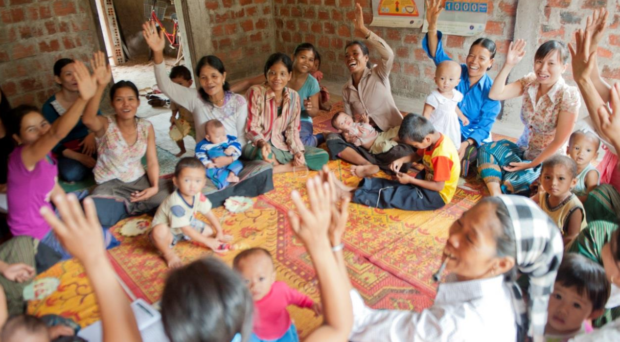
In remote areas, poor access to healthcare facilities – and consequently nutrition counseling services – hinders the uptake of recommended breastfeeding and complementary feeding practices. This challenge poses many questions for policymakers, health workers, and managers and staff at research institutions and non-governmental organizations.
Is an intervention model that empowers local collaborators to provide breastfeeding and complementary feeding support in remote villages feasible at scale? How much does it cost? Does the model help to improve breastfeeding and complementary feeding practices?
Is an intervention model that empowers local collaborators to provide breastfeeding and complementary feeding support in remote villages feasible at scale?
Our new research recently published in the International Journal for Equity in Health provides answers to these questions. A complement to 12 papers in the supplement, the paper examines the implementation, cost, and effectiveness of a “support-group model”.
The research provides important insights to improve breastfeeding and complementary feeding practices for women and their families living far from health facilities. The paper was written in collaboration with researchers at the University of South Carolina and Nanjing University of Information Science & Technology.
A study by Tran et al. in 2016 showed that compared to other areas in Viet Nam, mountainous and remote areas still have higher burdens of disease, less healthcare access, stronger social and structural barriers, and shortfalls in human, financial, and information resources.
To address the issue of poor access to healthcare facilities, Alive & Thrive initiated community support groups in remote villages across nine provinces in Viet Nam, in partnership with the country’s Ministry of Health.
Between 2011-2014, Alive & Thrive worked with Departments of Health from nine provinces to train 1,513 facilitators and established over 800 community support groups in 267 villages across the provinces. In 3 years of operation, the model provided 166,000 meeting/support contacts and reached 33,000 mothers at minimum cost (an average of USD 5 per client and USD 1 per contact).
The research shows that community support groups provide important data regarding reaching such targets and could certainly be scaled up to promote equity in breastfeeding support.
This model contributed to improved breastfeeding practices in the intervention areas. The project has since continued with funding from local government and other non-governmental organizations.
In 2020, the Government of Viet Nam issued Decision 1409/QĐ-TTg on “Implementation of National Target Program on Socio-economic Development of Remote Areas and among Ethnic Minority people for 2021–2030”, which aims to decrease the gap in living standards and income of ethnic minorities and mountainous areas compared with the national average.
The community support group model could support the goals of this Decision. The research shows that community support groups provide important data regarding reaching such targets and could certainly be scaled up to promote equity in breastfeeding support.
This is what people said about the community support group model
“The community support group creates an informal forum for mothers to share their experiences, while respecting local knowledge.” (a Director of a Provincial Center for Reproductive Health)
“At first, mothers had little knowledge of recommended community practices, after attending the support group, their behaviors have changed. Now pregnant women get vaccinated, go for antenatal care, after childbirth, mothers breastfeed their babies early. They also have a good understanding of appropriate complementary feeding and put it into practice.” (a collaborator)
“After participating in the community support group, I breastfed my baby exclusively for the first 6 months.” (a mother)
“Since my baby was 6 months old, I have helped my wife to cook complementary foods that are nutritious for my baby.” (a father)
Comments